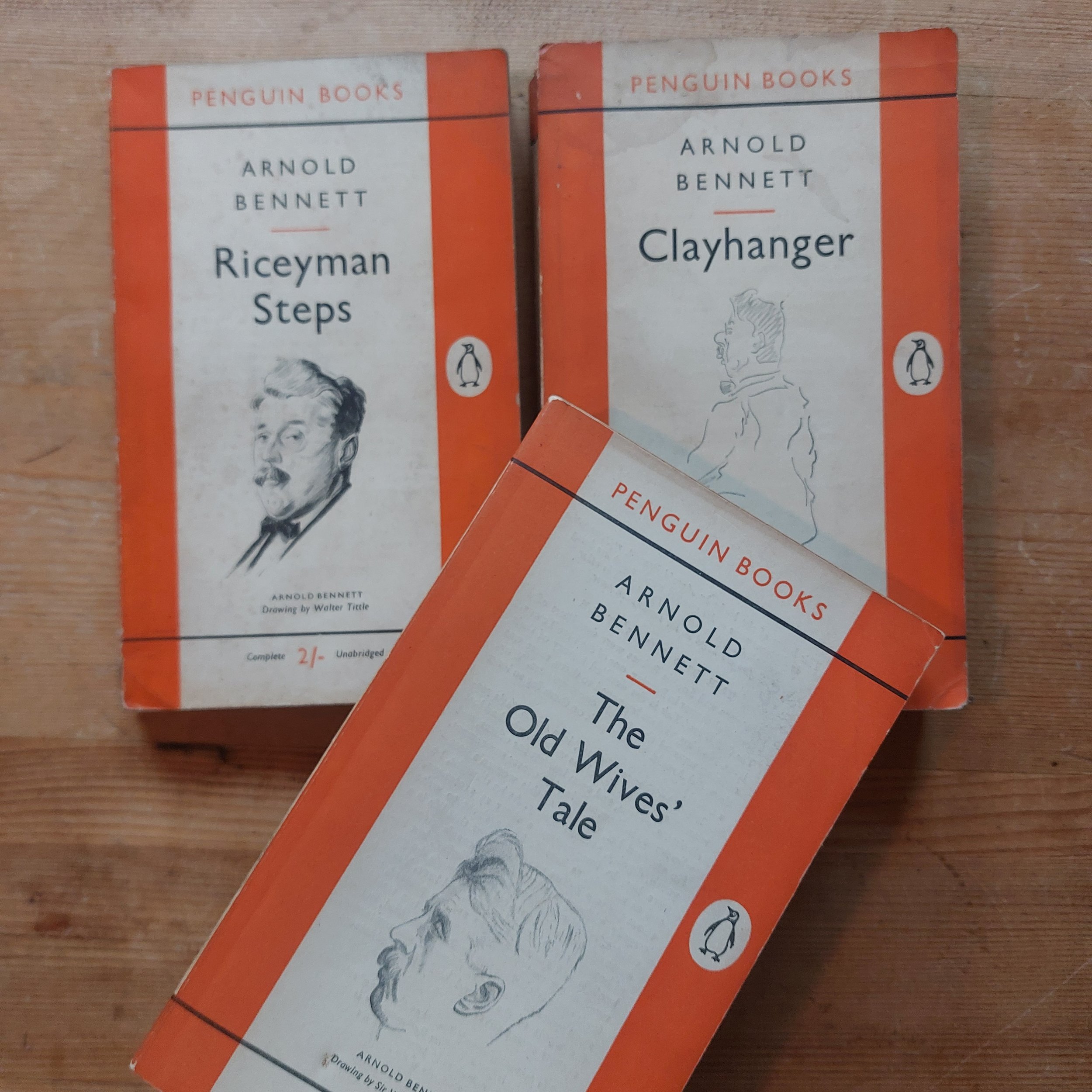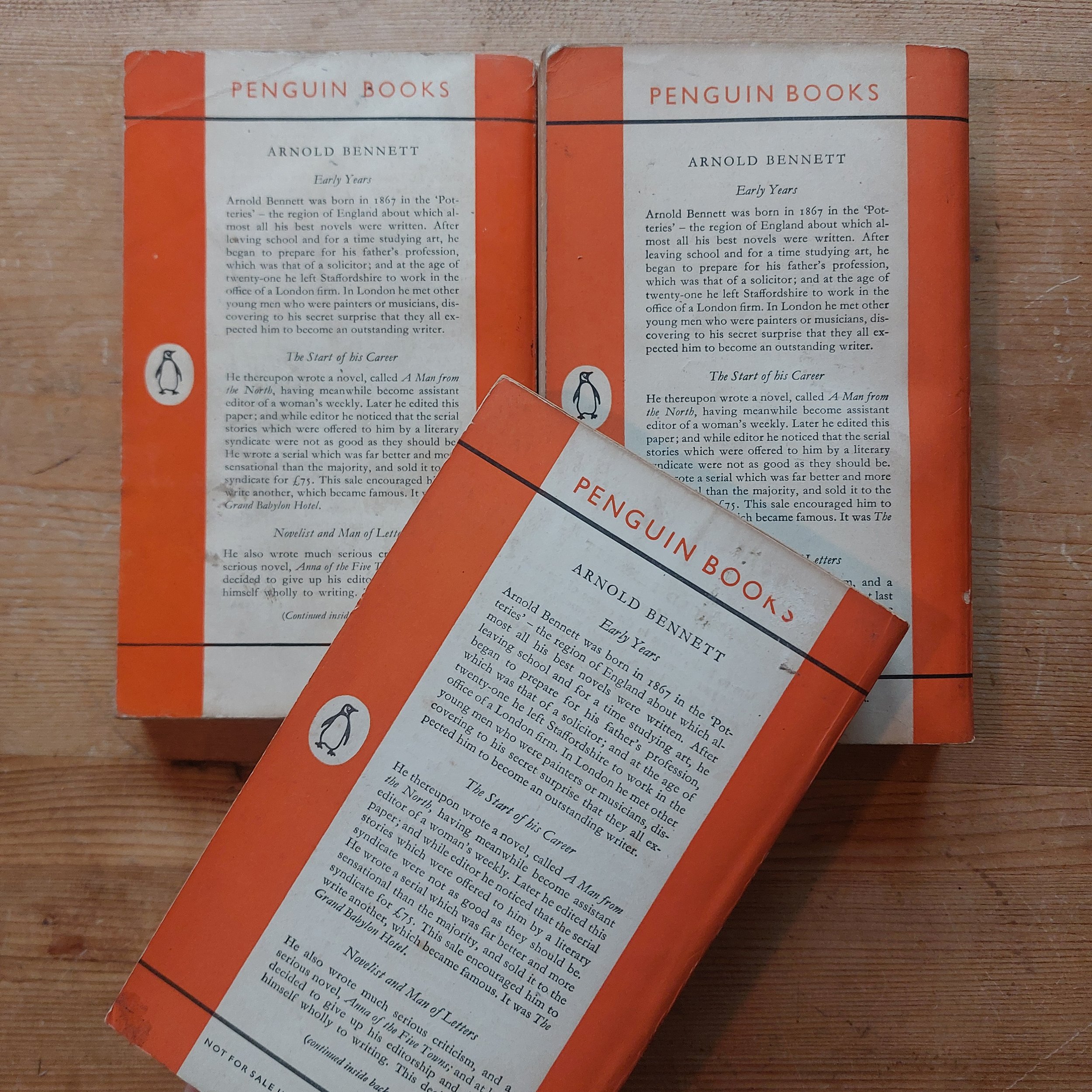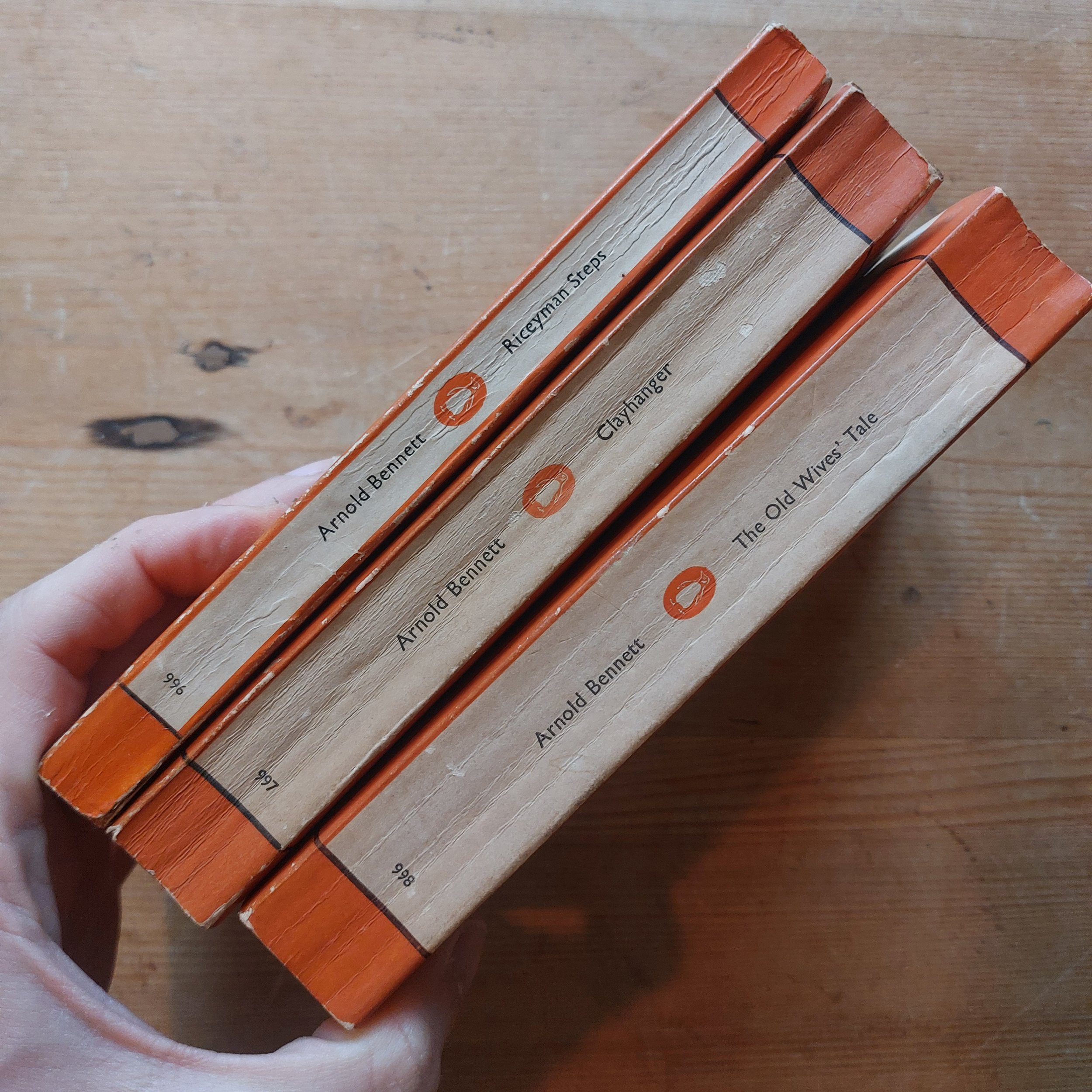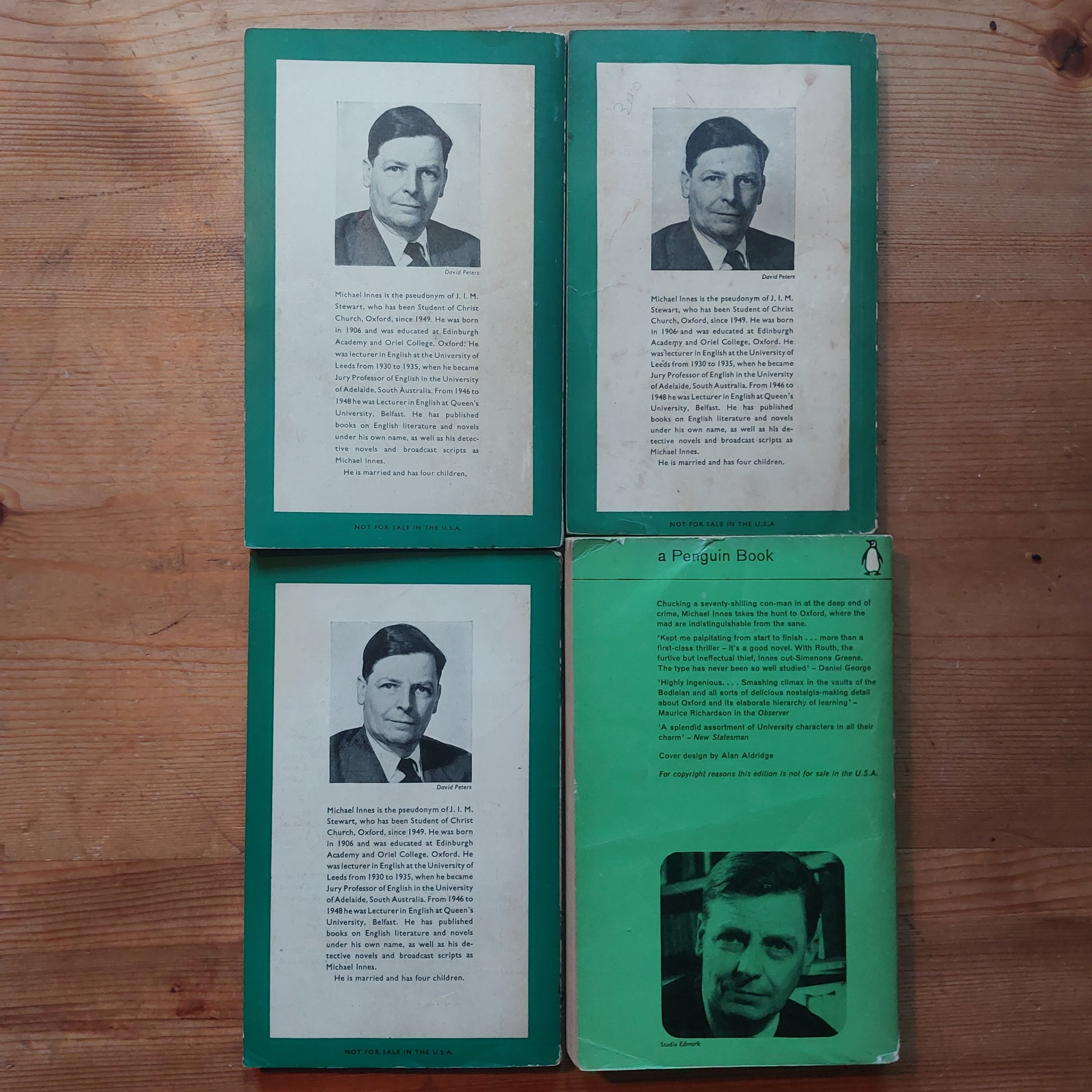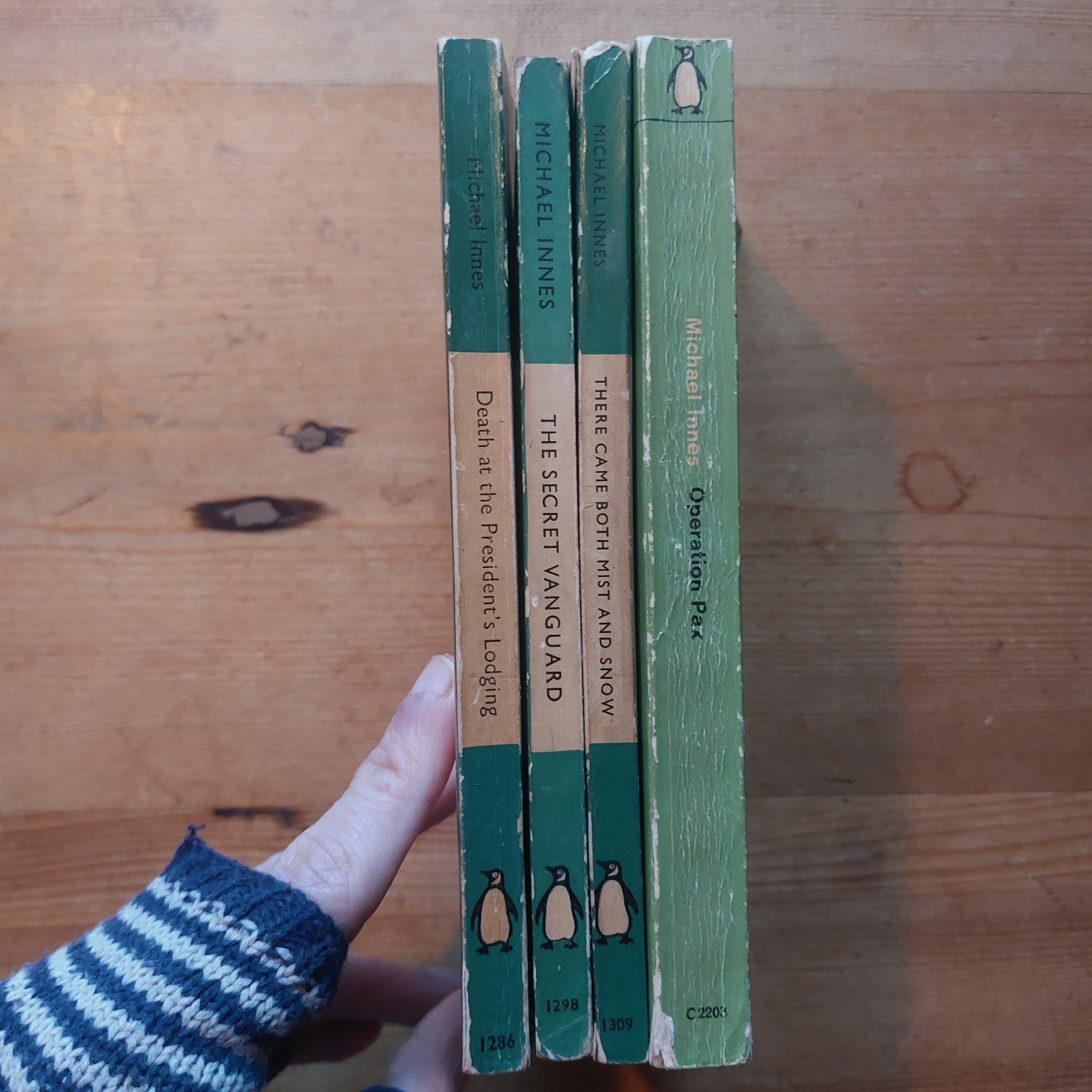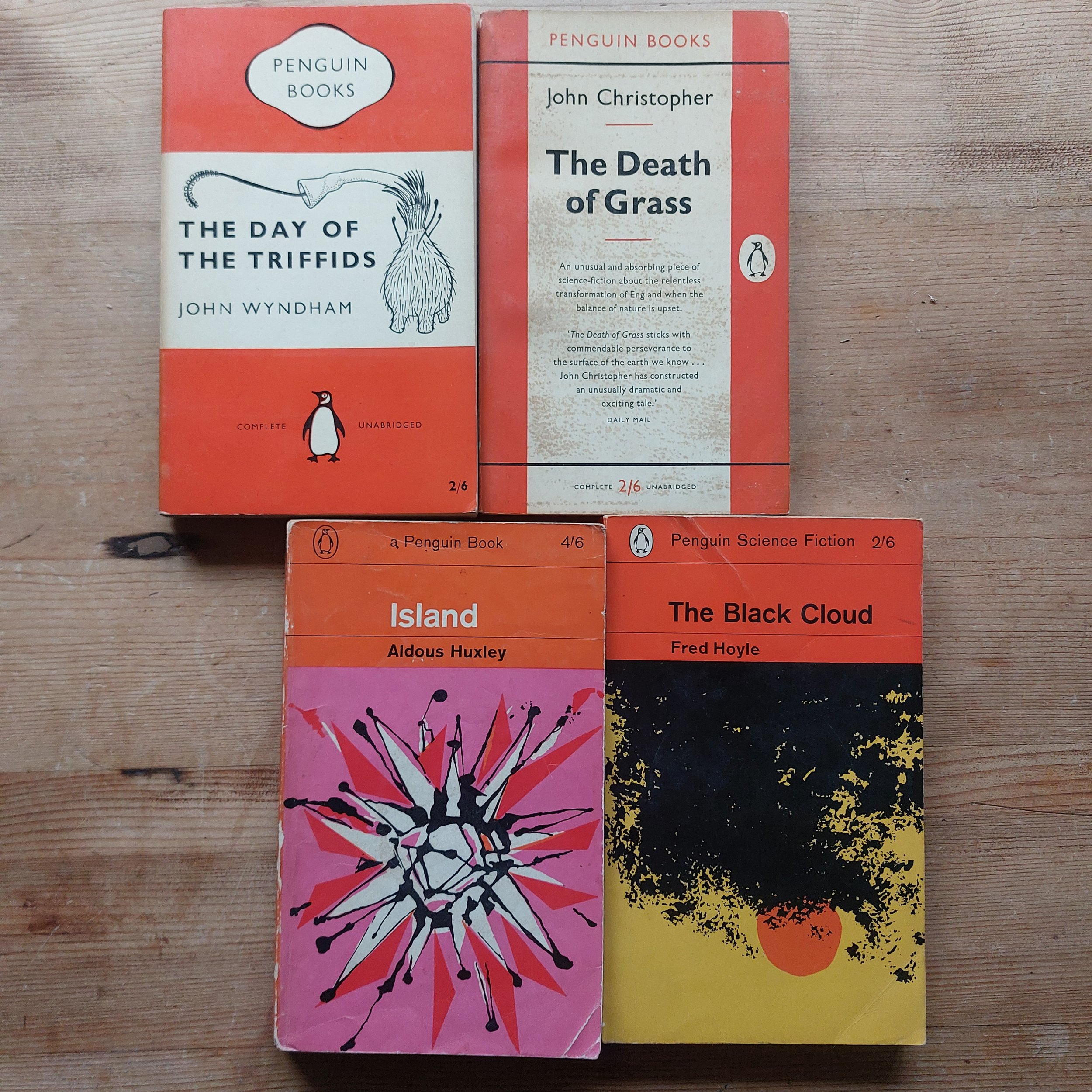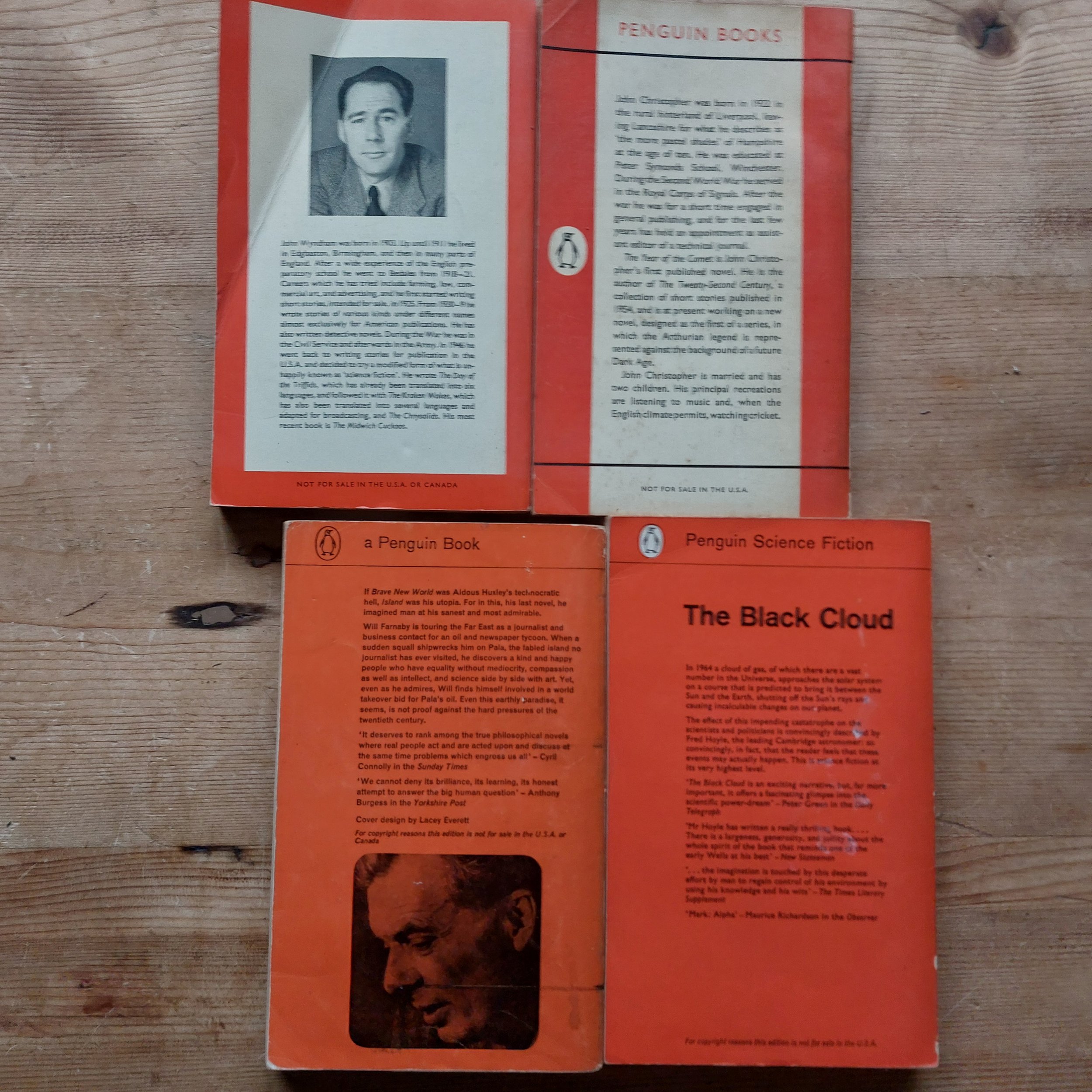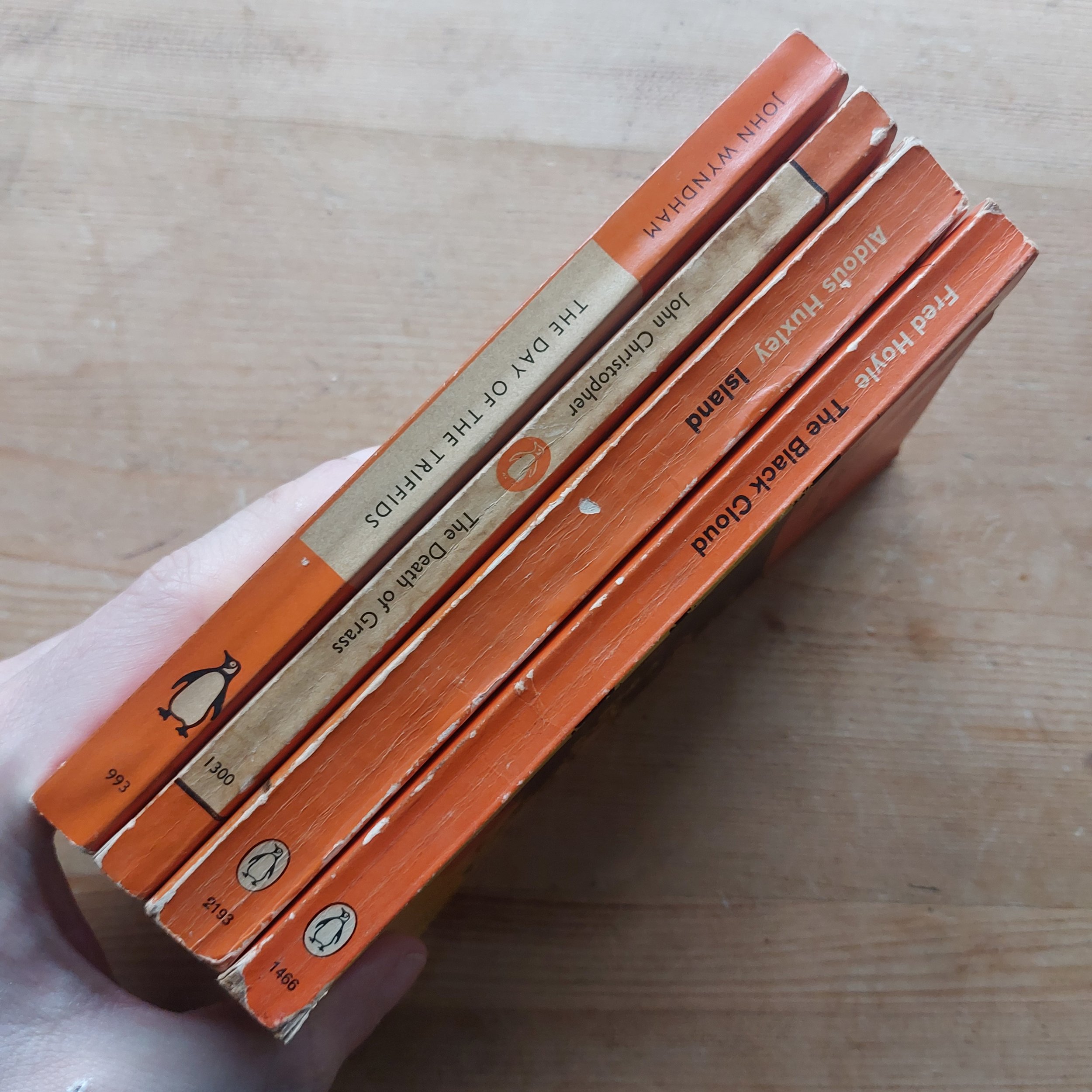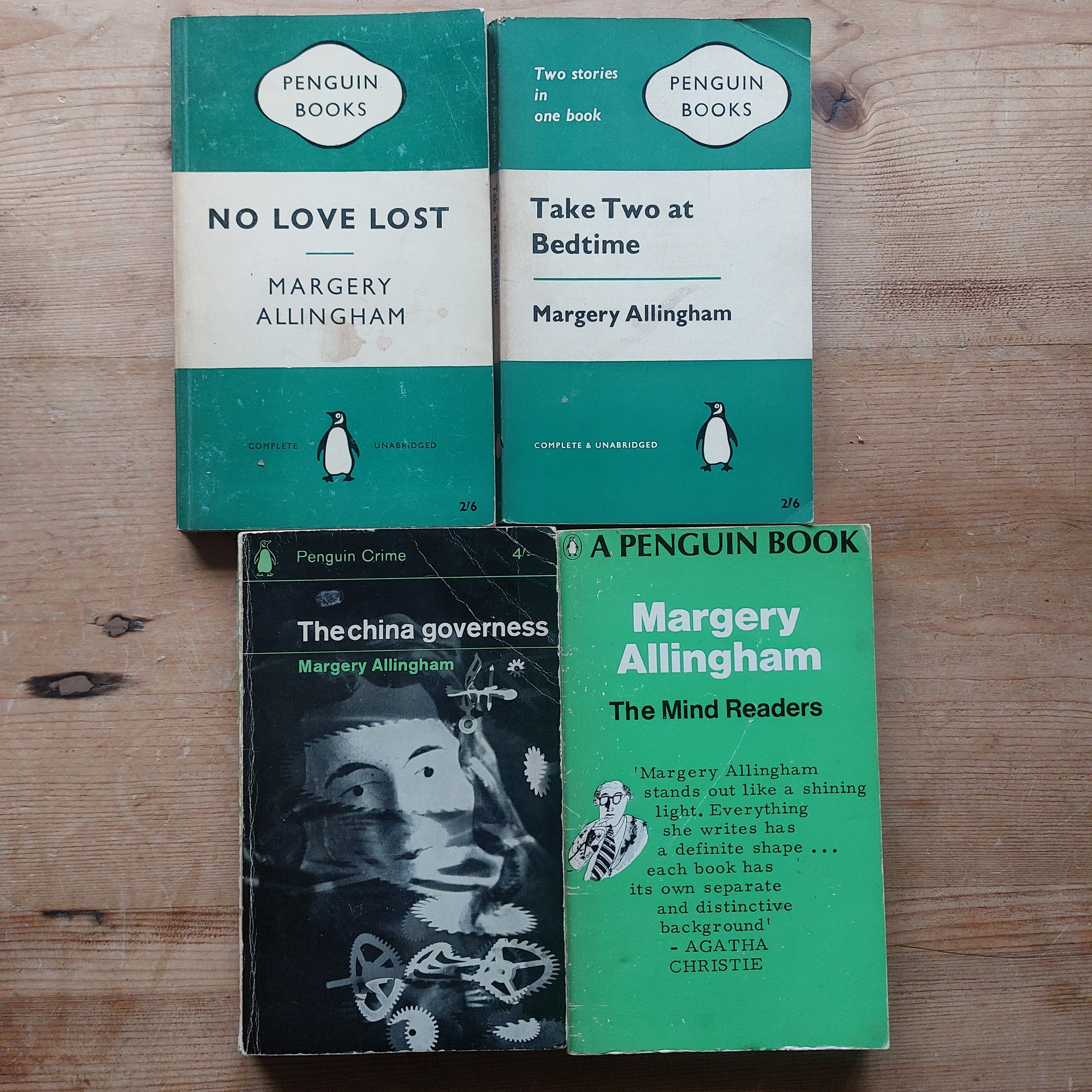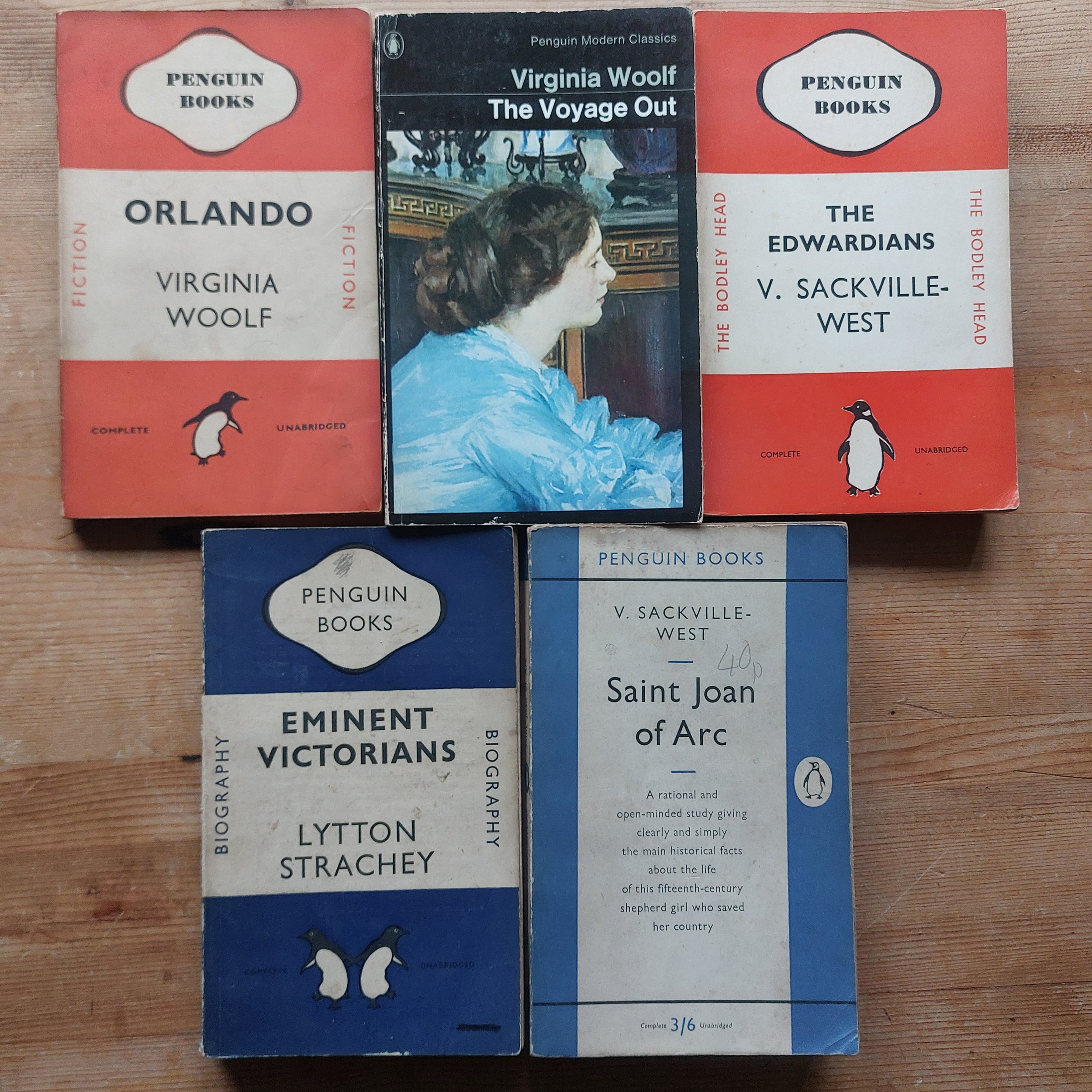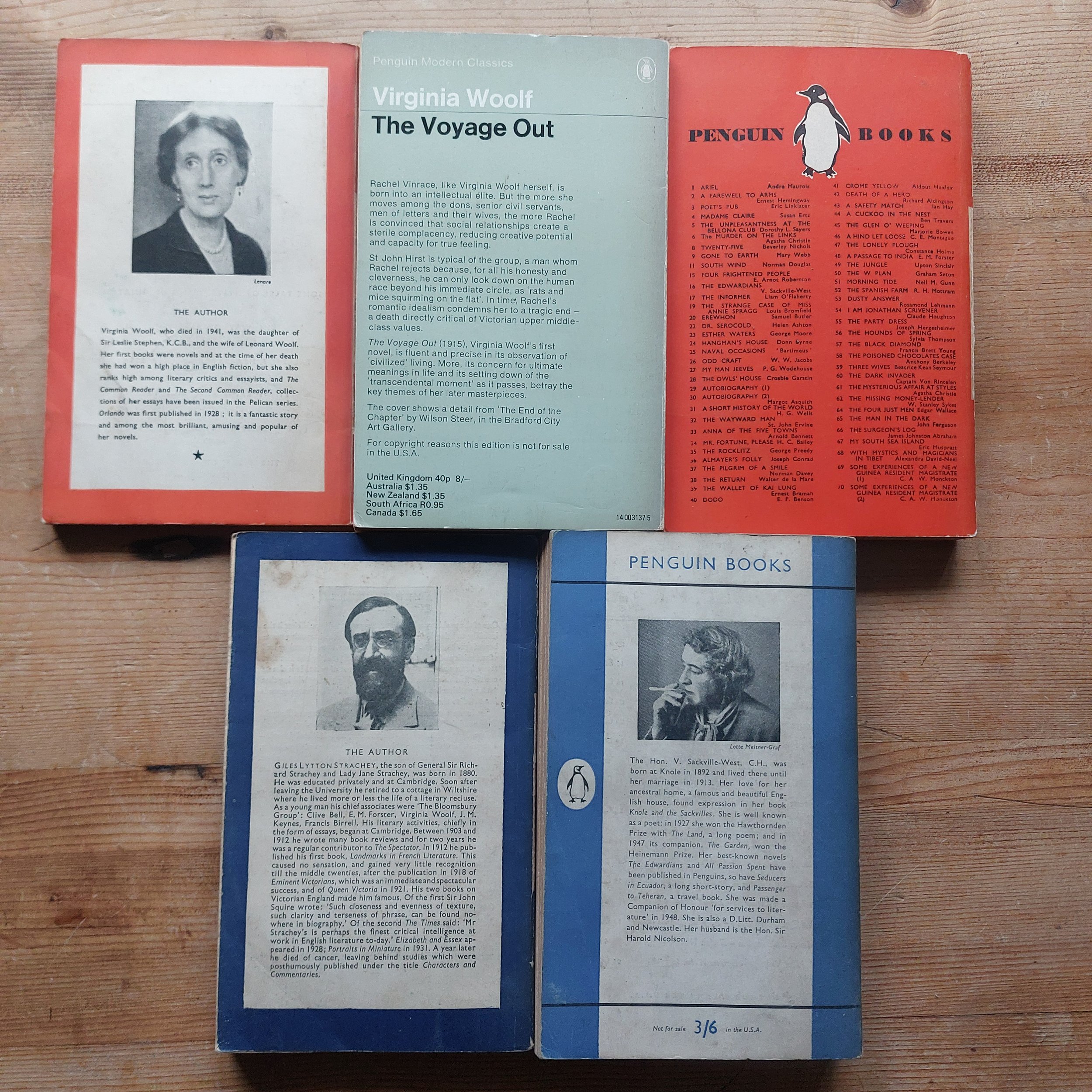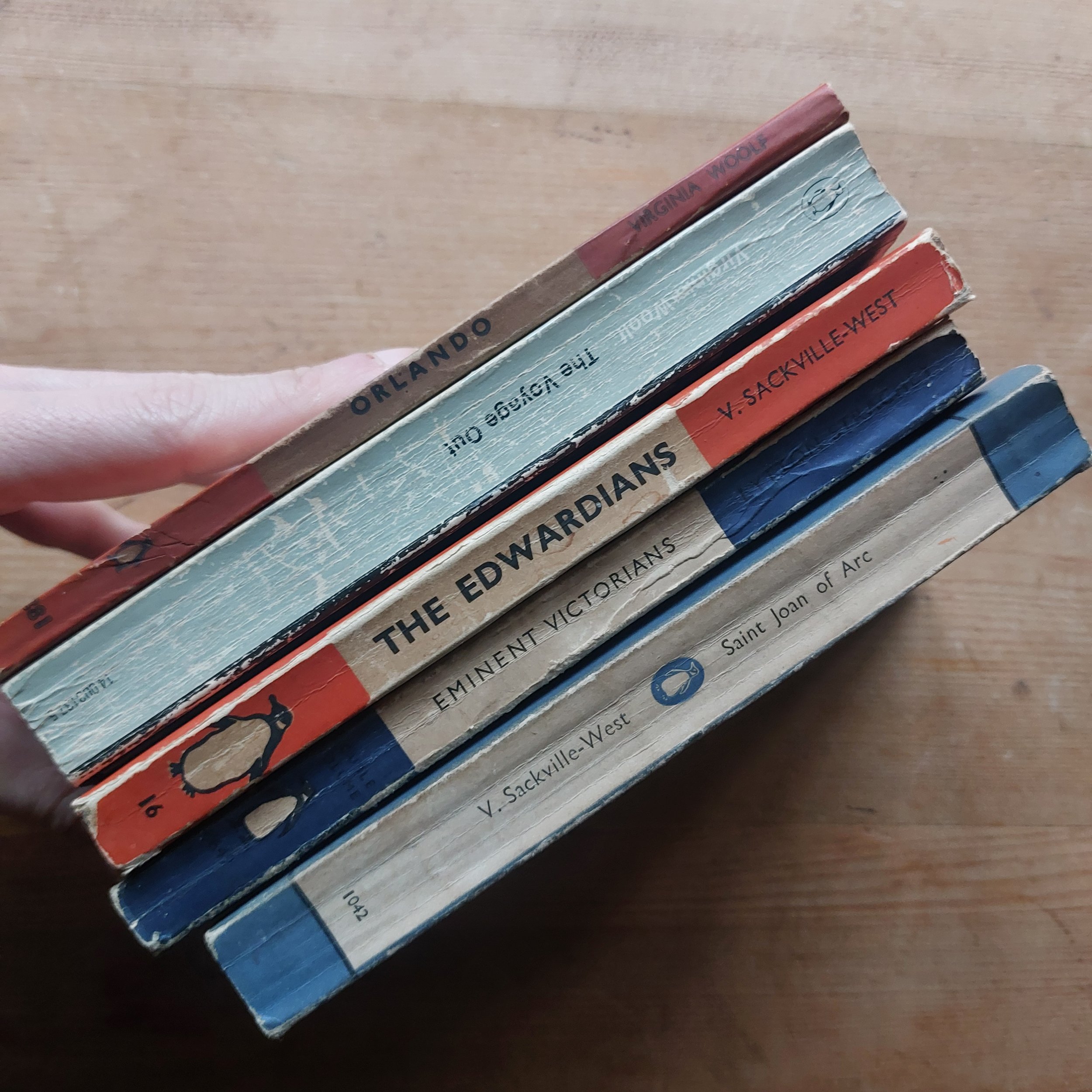Arnold Bennett Vintage Fiction Trilogy
A trio of titles from the pen of Arnold Bennett, the British novelist whose major works form an important link between the English novel and the mainstream of European realism.
Riceyman Steps, Penguin 1st 1954
Henry Earlforward, a shabby Clerkenwell bookseller, has retired from life to devote himself (and his wife Violet) to a consuming passion for money. Miserliness becomes a fatal illness and Bennett gives a terrifying description of its ravages. But the book's horrible situation is saved through the character of Elsie - whose life-affirming refusal to engage with the nightmarish world of the bookseller transforms the story.
Clayhanger, Penguin 1st 1954
No longer a boy, not quite a man, Edwin Clayhanger stands on a canal bridge on his last day of school, and surveys the valley of Bursley and the Five Towns. Serious, good-natured and full of incoherent ambition, Edwin's hopes and dreams for the future are just taking shape, even as they are put to the test by challenges from Edwin's domineering father, the stifling constraints of society, and an unusual young woman.
The Old Wives Tale, Penguin 1st 1954
First published in 1908, it tells the story of the Baines sisters--shy, retiring Constance and defiant, romantic Sophia--over the course of nearly half a century. Bennett traces the lives of the sisters from childhood in their father's drapery shop in provincial Bursley, England, during the mid-Victorian era, through their married lives, to the modern industrial age, when they are reunited as old women. The setting moves from the Five Towns of the Staffordshire Potteries to exotic and cosmopolitan Paris. It was fascinating to learn from Bennett's journal how he saw an old lady in a cafe and was inspired to think of how her life might have been lived, how she must have once been young.
All of these books are originals, published by Penguin Books. All books are in fair to good condition but please note there may be corner folds, inscriptions, tears, marks, signs of wear etc. inside some of these books and not shown in photographs (which form part of the description).
A trio of titles from the pen of Arnold Bennett, the British novelist whose major works form an important link between the English novel and the mainstream of European realism.
Riceyman Steps, Penguin 1st 1954
Henry Earlforward, a shabby Clerkenwell bookseller, has retired from life to devote himself (and his wife Violet) to a consuming passion for money. Miserliness becomes a fatal illness and Bennett gives a terrifying description of its ravages. But the book's horrible situation is saved through the character of Elsie - whose life-affirming refusal to engage with the nightmarish world of the bookseller transforms the story.
Clayhanger, Penguin 1st 1954
No longer a boy, not quite a man, Edwin Clayhanger stands on a canal bridge on his last day of school, and surveys the valley of Bursley and the Five Towns. Serious, good-natured and full of incoherent ambition, Edwin's hopes and dreams for the future are just taking shape, even as they are put to the test by challenges from Edwin's domineering father, the stifling constraints of society, and an unusual young woman.
The Old Wives Tale, Penguin 1st 1954
First published in 1908, it tells the story of the Baines sisters--shy, retiring Constance and defiant, romantic Sophia--over the course of nearly half a century. Bennett traces the lives of the sisters from childhood in their father's drapery shop in provincial Bursley, England, during the mid-Victorian era, through their married lives, to the modern industrial age, when they are reunited as old women. The setting moves from the Five Towns of the Staffordshire Potteries to exotic and cosmopolitan Paris. It was fascinating to learn from Bennett's journal how he saw an old lady in a cafe and was inspired to think of how her life might have been lived, how she must have once been young.
All of these books are originals, published by Penguin Books. All books are in fair to good condition but please note there may be corner folds, inscriptions, tears, marks, signs of wear etc. inside some of these books and not shown in photographs (which form part of the description).
A trio of titles from the pen of Arnold Bennett, the British novelist whose major works form an important link between the English novel and the mainstream of European realism.
Riceyman Steps, Penguin 1st 1954
Henry Earlforward, a shabby Clerkenwell bookseller, has retired from life to devote himself (and his wife Violet) to a consuming passion for money. Miserliness becomes a fatal illness and Bennett gives a terrifying description of its ravages. But the book's horrible situation is saved through the character of Elsie - whose life-affirming refusal to engage with the nightmarish world of the bookseller transforms the story.
Clayhanger, Penguin 1st 1954
No longer a boy, not quite a man, Edwin Clayhanger stands on a canal bridge on his last day of school, and surveys the valley of Bursley and the Five Towns. Serious, good-natured and full of incoherent ambition, Edwin's hopes and dreams for the future are just taking shape, even as they are put to the test by challenges from Edwin's domineering father, the stifling constraints of society, and an unusual young woman.
The Old Wives Tale, Penguin 1st 1954
First published in 1908, it tells the story of the Baines sisters--shy, retiring Constance and defiant, romantic Sophia--over the course of nearly half a century. Bennett traces the lives of the sisters from childhood in their father's drapery shop in provincial Bursley, England, during the mid-Victorian era, through their married lives, to the modern industrial age, when they are reunited as old women. The setting moves from the Five Towns of the Staffordshire Potteries to exotic and cosmopolitan Paris. It was fascinating to learn from Bennett's journal how he saw an old lady in a cafe and was inspired to think of how her life might have been lived, how she must have once been young.
All of these books are originals, published by Penguin Books. All books are in fair to good condition but please note there may be corner folds, inscriptions, tears, marks, signs of wear etc. inside some of these books and not shown in photographs (which form part of the description).

